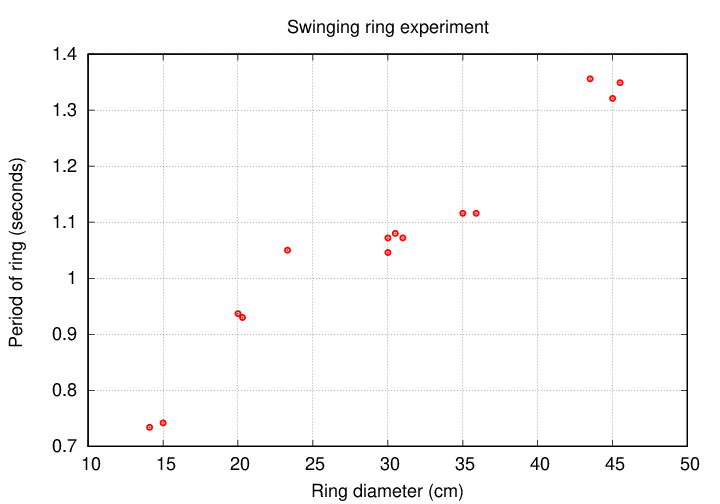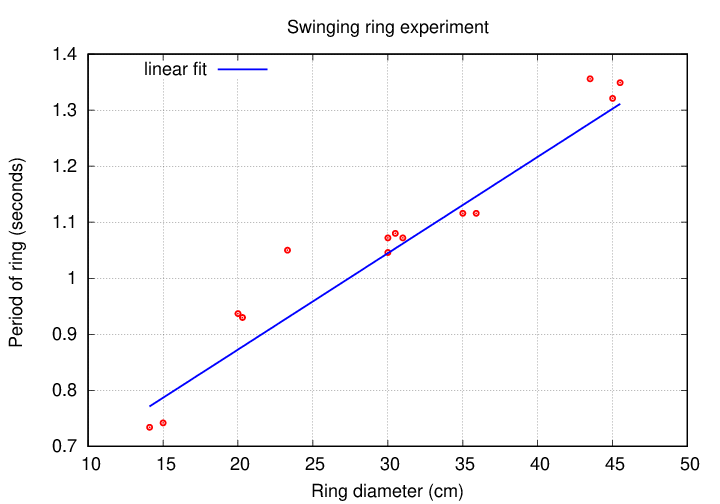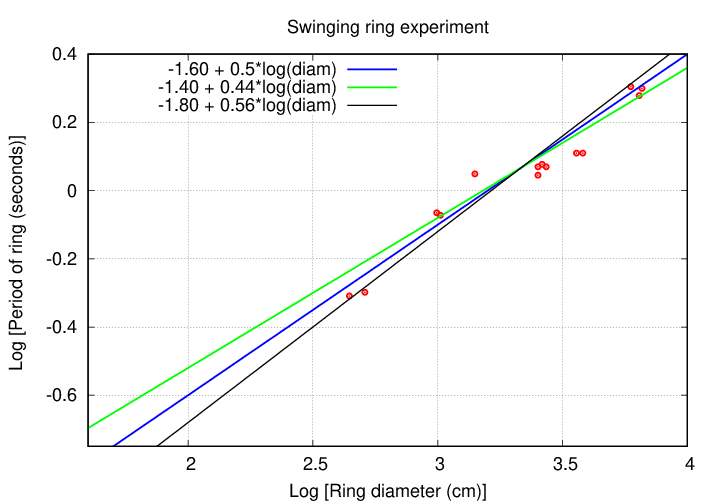
 Copyright © Michael Richmond.
This work is licensed under a Creative Commons License.
Copyright © Michael Richmond.
This work is licensed under a Creative Commons License.
The goal of this experiment was to predict the time it takes a small metal ring to swing back and forth. Students made measurements of the oscillations of a set of large rings, and tried to find some mathematical way to extrapolate to the behavior of a small ring.
Here are the collected measurements made by all the groups in class:

Note that a simple linear fit doesn't do a very good job.

That means that the period does NOT follow a relationship like

On the other hand, if we compute the LOGARITHM of each quantity, and plot log(period) vs. log(diameter), then we see a pretty nice linear relationship:

The slope of the best fitting line is just about 0.5, which means that

We can use this line to predict the period of the small ring.
small ring diameter D = 7.7 cm
log(D) = 2.04
So the predicted period is
log(P) = -1.60 + 0.5*(2.04)
= -0.58
-0.58
hence P = e = 0.56 seconds
However, note that even this equation does not fit the measurements perfectly. There is quite a bit of wiggle room for lines that represent the measurements pretty well.

Based on our measurements, the best we can do is to come up with a mathematical formula in which the parameters have both values and UNCERTAINTIES. The size of those uncertainties can be very important; we'll talk about them soon.
As you can see, those different fits yields a range of periods; some are larger and some are smaller than the 0.56 seconds we computed. All of them are consistent with the measurements.
It turns out that the ACTUAL period of the ring, based on measurements I made, is P = 0.53 seconds. This does lie within the span of the lines drawn in the diagram above. One of the groups predicted a period of 0.560 seconds, so I have placed their names onto Monday's Hall Of Fame.
Congratulations!
 Copyright © Michael Richmond.
This work is licensed under a Creative Commons License.
Copyright © Michael Richmond.
This work is licensed under a Creative Commons License.